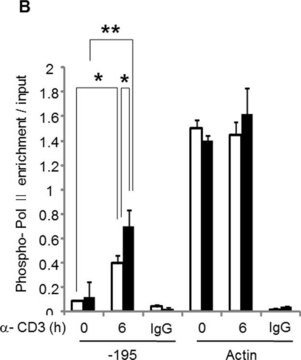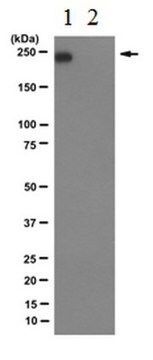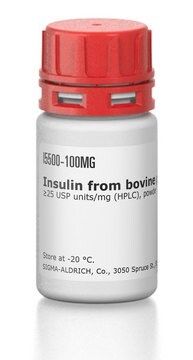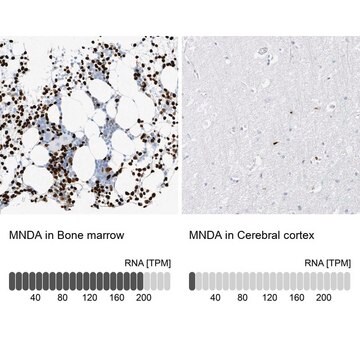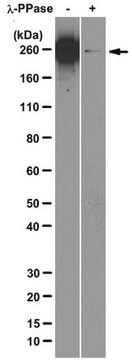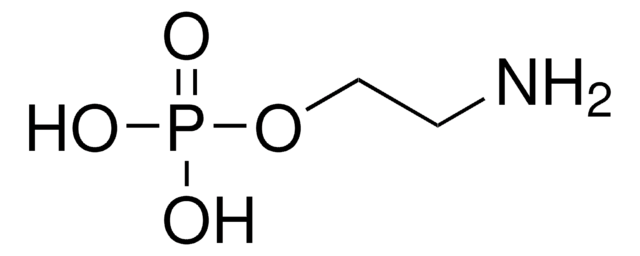SAB4200637
Monoclonal Anti-phospho-RNA polymerase II CTD (pSer2) antibody produced in rat
clone 3E7C7, purified from hybridoma cell culture
Synonyme(s) :
POLR2, POLRA, RPB1, RPBh1, RPO2, RPOL2, RpIILS, hRPB220, hsRPB1, polymerase (RNA) II (DNA directed) polypeptide A 220kDa (POLR2A)
Sélectionner une taille de conditionnement
Sélectionner une taille de conditionnement
About This Item
Produits recommandés
Source biologique
rat
Niveau de qualité
Forme d'anticorps
purified immunoglobulin
Type de produit anticorps
primary antibodies
Clone
3E7C7, monoclonal
Poids mol.
~250 kDa
Espèces réactives
rat, canine, mouse, human, monkey
Concentration
~1 mg/mL
Technique(s)
flow cytometry: 10 μg/test using using HeLa cells.
immunoblotting: 0.25-0.5 μg/mL using whole extracts of HeLa cells.
immunofluorescence: 4-8 μg/mL using using A549 cells
Isotype
IgG2a
Description générale
Spécificité
Immunogène
Application
- immunoblotting
- immunofluorescence
- flow cytometry
Actions biochimiques/physiologiques
Forme physique
Stockage et stabilité
Clause de non-responsabilité
Vous ne trouvez pas le bon produit ?
Essayez notre Outil de sélection de produits.
Code de la classe de stockage
10 - Combustible liquids
Classe de danger pour l'eau (WGK)
WGK 1
Point d'éclair (°F)
Not applicable
Point d'éclair (°C)
Not applicable
Faites votre choix parmi les versions les plus récentes :
Certificats d'analyse (COA)
Vous ne trouvez pas la bonne version ?
Si vous avez besoin d'une version particulière, vous pouvez rechercher un certificat spécifique par le numéro de lot.
Déjà en possession de ce produit ?
Retrouvez la documentation relative aux produits que vous avez récemment achetés dans la Bibliothèque de documents.
Notre équipe de scientifiques dispose d'une expérience dans tous les secteurs de la recherche, notamment en sciences de la vie, science des matériaux, synthèse chimique, chromatographie, analyse et dans de nombreux autres domaines..
Contacter notre Service technique

